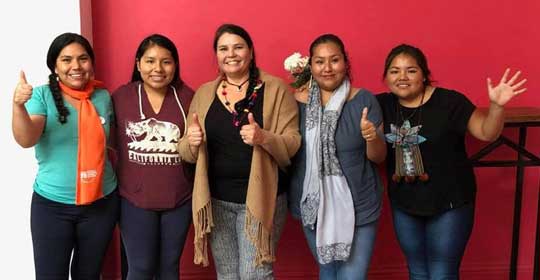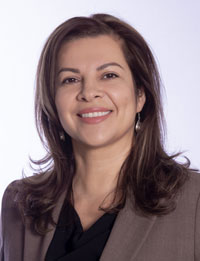Photo: Susan Swan has spent a great deal of time addressing the issue of lateral violence.
Over the last couple of years, I have seen various high-profile women speak out about lateral violence on social media, and each time I wanted to do more, say more, be a better friend, community member and ally. Sometimes I would respond by thanking them, but my own social media response just didn’t feel like enough. When it happens to others, the issue can be quickly forgotten as we can get pulled back into a long list of daily obligations, but when it happens to you it can be devastating and life changing. When we see it happening to others, it may seem that we are ignoring other people’s problems, not because we’re terrible people or because we don’t care. We simply left a world where we just didn’t have time.
Well, the world has literally stopped. Now, is a good time to ask ourselves a series of questions, like who am I? What kind of world did I just leave? What did I like or dislike about this world? What responsibility do I have in making the world a better place? The demands of modern society left us living in a way without really seeing each other, without time to stop and visit, to do anything else but keep up with daily demands. This way of life was depriving us of authentic human connection, making it difficult over time to be our best selves for each other. According to the Occupational Safety and Health Administration (OSHA), work place violence amounts to 130 billion dollars of collective annual loss due to various types of workplace violence with about two million people reporting some type of workplace violence on an annual basis. We have to ask ourselves how any type of violence became the norm. With all this time on our hands now, it’s a great opportunity to consider the steps we can each take to create a better world. We literally can clean things up and give attention where it is needed.
Within the Indigenous community, lateral violence is viewed as displaced behaviors where members of the same group strike out at each other rather than being supportive. It can include gossiping, undermining, backstabbing and challenging behaviors. From a historical lens, it occurs when the oppressed become the oppressors of themselves as a group and of each other, which in turn can often prevent positive change for a group. The Native Women's Association of Canada has produced some excellent resources which further define lateral violence from this particular lens, from which the definition of lateral violence has been taken for this article (2011).
Upon reflection, we have learned so much over the past five years from the Truth and Reconciliation Commission (2016) and from the Missing and Murdered Indigenous Women and Girls Report (2019). In part, lateral violence within and among Indigenous communities has roots in colonialism where abuse towards Indigenous children in Residential school was rampant, overlooked by society and normalized. Children were unprotected, not strong enough to stand up to their abusers, so they learned to lash out at each other. This is cruel learned behavior. Children may not have been strong enough to fight back, but as adults and leaders we can protect ourselves now and learn better behaviors towards one another. Unaddressed, we all continue to be vulnerable especially those that put themselves out there or who step into roles of leadership. From this historical perspective, we see that lateral violence is a learned behavior, but one that can be changed.
For this reason, we need champions, like Susan Swan who has spent a great deal of time within her second career addressing this issue. Susan is an Anishinaabe from Lake Manitoba First Nation and was the first Indigenous female police officer employed by the Winnipeg Police Service (1987). During this time, she witnessed all kinds of violence within and among the workplace and within the Indigenous community. Her desire to see improved relations and a better world led her to later become an accomplished human resource professional with direct experience in personnel development, union and labour relations, accompanied with negotiations and conflict management. It is here where she developed lateral violence training to help repair our working and community relations.
We have to see how lateral violence has been hurting loved ones within our communities. Kelly Fraser was one of those people, an Inuk singer and rising star who spoke out against lateral violence on her social media site and soon after committed suicide this past Christmas. In 2017, Serena McKay a young attractive girl from a nearby First Nation was murdered by peers with the video of her murder posted on social media. These are some of the more extreme examples of lateral violence in our community and most certainly our Calls to Action. We can’t leave this issue in our rear-view mirror; we must stand up and be their voice now. Nokiiwin Tribal Council in Ontario has developed a series of kindness workshops for its community members to help them journey away from lateral violence towards lateral kindness. These are all important steps to creating safe, respectful spaces for each of us. They illuminate messages related to traditional teachings as good reminders to be aware of one’s own behavior as a responsibility to each other as community members.
Forgiveness is a huge part of the equation to restore wellness for oneself or to repair damaged relationships, but easier said than done. Susan says, “those impacted by lateral violence have to find a way to release anger, resentment, and even thoughts of vengeance towards those that hurt you or your loved ones, and this requires forgiveness and compassion”. We have to be willing to roll our sleeves up and address toxic behaviors and attitudes with people that are in close proximity in the workplace or in the community which is not easy. Unfortunately, some people choose to leave these toxic situations. Those that choose to stand up and fight it or simply endure it end up dealing with physical, emotional or spiritual health issues. Overall, addressing this issue requires courage, honesty and vulnerability, says Susan Swan.
In her workshops, Susan will have participants consider how behaviors contribute to the development of toxic or healthy environments. “Its hard to have people address their jealousy, ambitions and lack of communication skills that lead to misunderstandings, which in turn are often the underlying issues that lead to lateral violence as we’ve seen in these two aforementioned examples. But she still believes people can change and that we must change in order to create better work spaces and healthier communities. Dr. Brené Brown believes vulnerability is the key ingredient. Brené is a research professor who has spent the past two decades studying courage, vulnerability, shame, and empathy says it is so much easier to cause pain than feel pain, and people are taking their pain and they’re working it out against other people, and this has to stop”.

Photo: Susan Swan with a group of participants from one of her workshops.
In her workshops, Susan illuminates the role and responsibility of employers, bystanders and community members but its still not easy. Elder Mae Louise has stated time and again, “it is difficult to work in western institutional structures that do not work for us and that are not of our making”. These systems create the conditions that pit individuals and groups against each other, whether its deliberate or inadvertent because these systems are adversarial in nature. They are designed to be competitive, with norms that create a win/lose outcome.
For this reason, Susan says, we must use the best of who we are, “we must remember that we can restore our systems of kinship that entailed strong traditions of caring for one another. Our people strived to be good relatives and good neighbors, this was central to sustaining a strong family, community and Nation” she says. Susan has invested time in delivering lateral violence training because she believes we can change the way we relate and behave within our workspaces or in the community, but we have to be willing to address these issues from all angles and learn to stand up for ourselves and for each other”.
In talking to others about this topic, some people say we need better leadership to address this issue. However, when we leave the responsibility to one person to create the change, we may be waiting a lifetime for the kind of change we need, and it deflects personal responsibility. Within the western hierarchy there is only so much room at the top for ‘leadership’ and in some cases lateral violence results from aspiration to be the leader, where people are caught up in fighting each other for power and control. This is the story of the crab in the bucket. When we define success within western hierarchical parameters, nobody wants to be left out or down below which is why people get pulled back down when they start to shine, rise or lead.
From a cultural lens, I remember Elder Leslie Spillet speak about leadership when I was still a young woman, she stated, we are all leaders and we all must lead and live with good relationships. Just because there is only one Chief, one Prime Minister, one Manager, it doesn’t mean we can’t learn to lead. When we look back at the Anishinaabe Clan system, at the ways in which we lived and worked together as a people and as Nations before the arrival of Europeans, there was room for everybody to lead. We did not operate within a triangular hierarchy that would have us believe there is only so much room at the top for one leader. In another conversation with Elder Dave Courchene Jr., he said, “we must remember that as Indigenous peoples we had this culture of caring for each other before the arrival of Europeans, everything good started with spirit, good intentions and good will towards each other. We cared for our collective well-being and not just ourselves as individuals. We also had our ways of resolving conflict that we can restore. We can use our Elders, mediation, ceremony and our kin to help resolve conflict. This will create better spaces for each other as an act of love and kindness”. Essentially, we must learn to live in our hearts again and from spirit, and this must be an essential part of what we teach in schools”. We therefore have a responsibility and an opportunity now, as kin, as family and community to work through the issue of lateral violence to consider the type of world we want to create for ourselves and each other.
Now more than ever we have to learn to be good neighbors, colleagues and family members that are engaged. The world we return to may never be the same. We may never want to greet each other with hugs and kisses again and may look to maintain social distancing forever. Let’s make good use of this isolation time. Think deeply about the type of world you want to return to because there’s a huge opportunity now to dig deep, to notice, to reset. Let’s envision a new world together and take the steps now to build good relationships and a better world when we do re-emerge.

Rebecca Chartrand writes about amazing Indigenous women who are sharing in the responsibility to guide our nations back to a place of well-being.